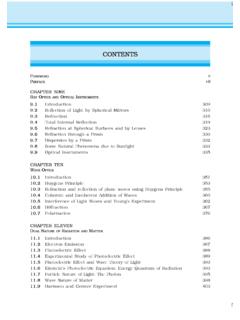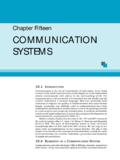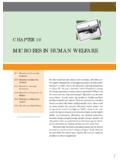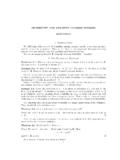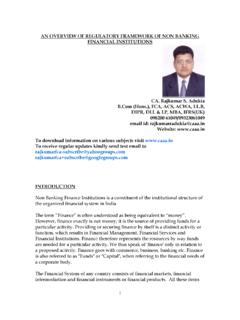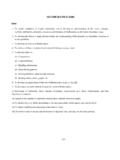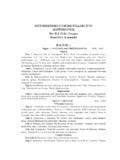Transcription of REAL NUMBERS 1 - Prashanth Ellina
1 REAL IntroductionIn Class IX, you began your exploration of the world of real NUMBERS and encounteredirrational NUMBERS . We continue our discussion on real NUMBERS in this chapter. Webegin with two very important properties of positive integers in Sections and ,namely the Euclid s division algorithm and the Fundamental Theorem of s division algorithm, as the name suggests, has to do with divisibility ofintegers. Stated simply, it says any positive integer a can be divided by another positiveinteger b in such a way that it leaves a remainder r that is smaller than b. Many of youprobably recognise this as the usual long division process. Although this result is quiteeasy to state and understand, it has many applications related to the divisibility propertiesof integers. We touch upon a few of them, and use it mainly to compute the HCF oftwo positive Fundamental Theorem of Arithmetic, on the other hand, has to do somethingwith multiplication of positive integers.
2 You already know that every composite numbercan be expressed as a product of primes in a unique way this important fact is theFundamental Theorem of Arithmetic. Again, while it is a result that is easy to state andunderstand, it has some very deep and significant applications in the field of use the Fundamental Theorem of Arithmetic for two main applications. First, weuse it to prove the irrationality of many of the NUMBERS you studied in Class IX, such as2, 3 and 5. Second, we apply this theorem to explore when exactly the decimalexpansion of a rational number, say (0)pqq , is terminating and when it is non-terminating repeating. We do so by looking at the prime factorisation of the denominatorq of pq. You will see that the prime factorisation of q will completely reveal the natureof the decimal expansion of let us begin our Euclid s Division LemmaConsider the following folk puzzle*.
3 A trader was moving along a road selling eggs. An idler who didn t havemuch work to do, started to get the trader into a wordy duel. This grew into afight, he pulled the basket with eggs and dashed it on the floor. The eggs trader requested the Panchayat to ask the idler to pay for the broken Panchayat asked the trader how many eggs were broken. He gave thefollowing response:If counted in pairs, one will remain;If counted in threes, two will remain;If counted in fours, three will remain;If counted in fives, four will remain;If counted in sixes, five will remain;If counted in sevens, nothing will remain;My basket cannot accomodate more than 150 , how many eggs were there? Let us try and solve the puzzle. Let the numberof eggs be a.
4 Then working backwards, we see that a is less than or equal to 150:If counted in sevens, nothing will remain, which translates to a = 7p + 0, forsome natural number p. If counted in sixes, a = 6q+ counted in fives, four will remain. It translates to a = 5r + 4, for some naturalnumber counted in fours, three will remain. It translates to a = 4s + 3, for some naturalnumber counted in threes, two will remain. It translates to a = 3t + 2, for some naturalnumber counted in pairs, one will remain. It translates to a = 2u + 1, for some naturalnumber is, in each case, we have a and a positive integer b (in our example,b takes values 7, 6, 5, 4, 3 and 2, respectively) which divides a and leaves a remainderr (in our case, r is 0, 5, 4, 3, 2 and 1, respectively), that is smaller than b. The* This is modified form of a puzzle given in Numeracy Counts!
5 By A. Rampal, and NUMBERS3moment we write down such equations we are using Euclid s division lemma,which is given in Theorem back to our puzzle, do you have any idea how you will solve it? Yes! Youmust look for the multiples of 7 which satisfy all the conditions. By trial and error, youwill find he had 119 order to get a feel for what Euclid s division lemma is, consider the followingpairs of integers:17, 6;5, 12;20, 4 Like we did in the example, we can write the following relations for each suchpair:17 = 6 2 + 5 (6 goes into 17 twice and leaves a remainder 5)5 = 12 0 + 5 (This relation holds since 12 is larger than 5)20 = 4 5 + 0 (Here 4 goes into 20 five-times and leaves no remainder)That is, for each pair of positive integers a and b, we have found whole numbersq and r, satisfying the relation:a = bq + r, 0 r < bNote that q or r can also be don t you now try finding integers q and r for the following pairs of positiveintegers a and b?
6 (i) 10, 3(ii) 4, 19(iii) 81, 3 Did you notice that q and r are unique? These are the only integers satisfying theconditions a = bq + r, where 0 r < b. You may have also realised that this is nothingbut a restatement of the long division process you have been doing all these years, andthat the integers q and r are called the quotient and remainder, formal statement of this result is as follows :Theorem (Euclid s Division Lemma) : Given positive integers a and b,there exist unique integers q and r satisfying a = bq + r, 0 r < result was perhaps known for a long time, but was first recorded in Book VIIof Euclid s Elements. Euclid s division algorithm is based on this algorithm is a series of well defined stepswhich gives a procedure for solving a type word algorithm comes from the nameof the 9th century Persian mathematicianal-Khwarizmi.
7 In fact, even the word algebra is derived from a book, he wrote, called Hisabal-jabr w lemma is a proven statement used forproving another s division algorithm is a technique to compute the Highest Common Factor(HCF) of two given positive integers. Recall that the HCF of two positive integers aand b is the largest positive integer d that divides both a and us see how the algorithm works, through an example first. Suppose we needto find the HCF of the integers 455 and 42. We start with the larger integer, that is,455. Then we use Euclid s lemma to get455 = 42 10 + 35 Now consider the divisor 42 and the remainder 35, and apply the division lemmato get42 = 35 1 + 7 Now consider the divisor 35 and the remainder 7, and apply the division lemmato get35 = 7 5 + 0 Notice that the remainder has become zero, and we cannot proceed any claim that the HCF of 455 and 42 is the divisor at this stage, , 7.
8 You can easilyverify this by listing all the factors of 455 and 42. Why does this method work? Itworks because of the following , let us state Euclid s division algorithm obtain the HCF of two positive integers, say c and d, with c > d, followthe steps below:Step 1 :Apply Euclid s division lemma, to c and d. So, we find whole NUMBERS , q andr such that c = dq + r, 0 r < 2 :If r = 0, d is the HCF of c and d. If r 0, apply the division lemma to d and 3 :Continue the process till the remainder is zero. The divisor at this stage willbe the required ibn Musa al-Khwarizmi( 780 850)REAL NUMBERS5 This algorithm works because HCF (c, d) = HCF (d, r) where the symbolHCF (c, d) denotes the HCF of c and d, 1 : Use Euclid s algorithm to find the HCF of 4052 and :Step 1 :Since 12576 > 4052, we apply the division lemma to 12576 and 4052, to get12576 =4052 3 + 420 Step 2 :Since the remainder 420 0, we apply the division lemma to 4052 and 420, toget4052 = 420 9 + 272 Step 3.
9 We consider the new divisor 420 and the new remainder 272, and apply thedivision lemma to get420 = 272 1 + 148We consider the new divisor 272 and the new remainder 148, and apply the divisionlemma to get272 = 148 1 + 124We consider the new divisor 148 and the new remainder 124, and apply the divisionlemma to get148 = 124 1 + 24We consider the new divisor 124 and the new remainder 24, and apply the divisionlemma to get124 = 24 5 + 4We consider the new divisor 24 and the new remainder 4, and apply the divisionlemma to get24 = 4 6 + 0 The remainder has now become zero, so our procedure stops. Since the divisor at thisstage is 4, the HCF of 12576 and 4052 is that 4 = HCF (24, 4) = HCF (124, 24) = HCF (148, 124) =HCF (272, 148) = HCF (420, 272) = HCF (4052, 420) = HCF (12576, 4052).Euclid s division algorithm is not only useful for calculating the HCF of verylarge NUMBERS , but also because it is one of the earliest examples of an algorithm thata computer had been programmed to carry :1.
10 Euclid s division lemma and algorithm are so closely interlinked that people oftencall former as the division algorithm Although Euclid s Division Algorithm is stated for only positive integers, it can beextended for all integers except zero, , b 0. However, we shall not discuss thisaspect s division lemma/algorithm has several applications related to findingproperties of NUMBERS . We give some examples of these applications below:Example 2 : Show that every positive even integer is of the form 2q, and that everypositive odd integer is of the form 2q + 1, where q is some : Let a be any positive integer and b = 2. Then, by Euclid s algorithm,a = 2q + r, for some integer q 0, and r = 0 or r = 1, because 0 r < 2. So,a = 2q or 2q + a is of the form 2q, then a is an even integer.
